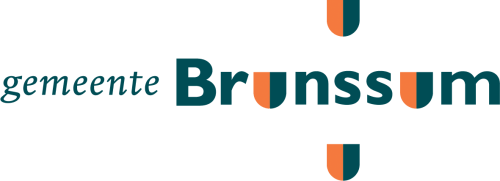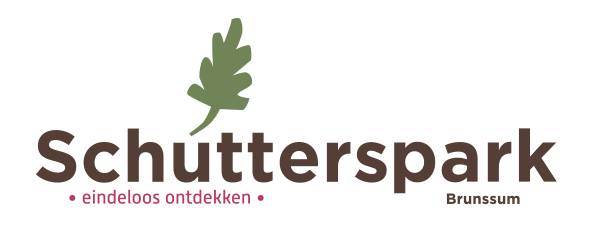Nature
Schutterspark
Watch the unique hanging fens from the decking bridges. Or walk through the swamp forest. Stroll along the meandering Roode Beek. Spot the special plant species or one of the many park inhabitants. If the attractions are too crowded, go for a lovely walk through nature. Schutterspark is full of discoveries for young and old!
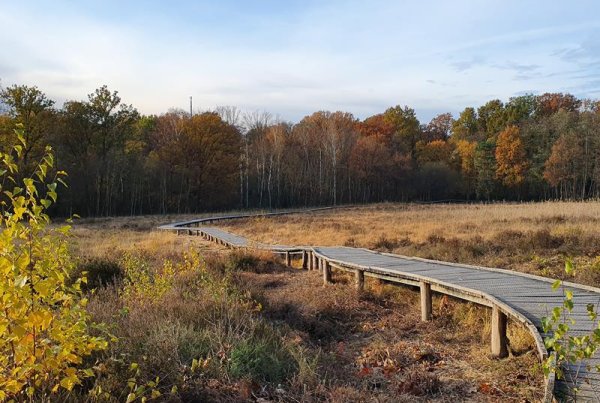
Hanging fens
Unique in Europe: the hanging fens. These are created by the special soil in Schutterspark. Because of the solid clay layers in the soil, the water from the Roode Beek and the groundwater cannot drain away. The spring water bubbles up (this process is called seepage). This causes bowl-shaped peat formation or hanging peat. The result: unusual types of wet heath and peat which attract unusual animals. Admire the hanging fens from the plank bridge or the viewpoint (see number 1 on the map).
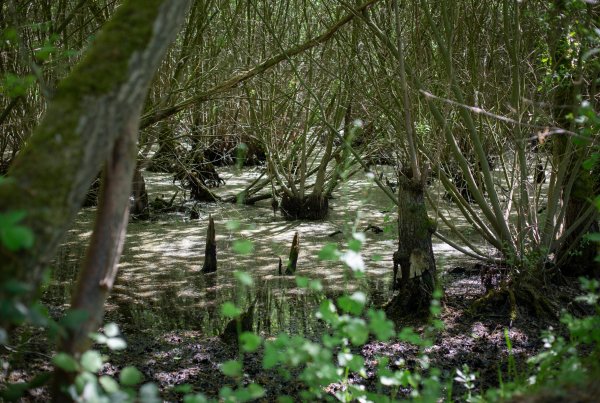
Swamp forest
Protruding trees and tree trunks with ducklings swimming between them. Jet-black mud. From the decking bridges, you walk straight through this natural phenomenon that looks a little bit alien. Take your time and listen carefully. Will you hear or see a kingfisher? This piece of woodland is a favourite spot of every Schutterspark enthusiast (see number 29 on the map).
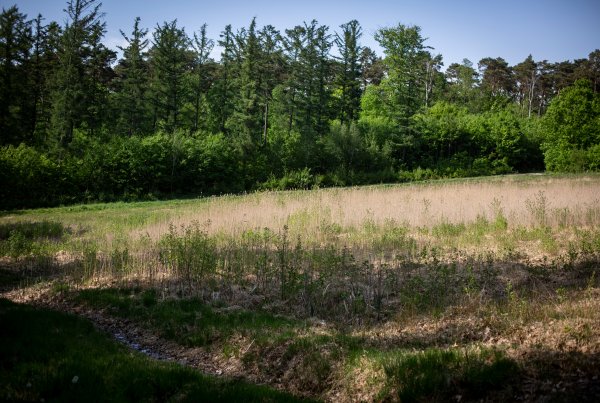
Forest
Due to the rise of the mining industry, the demand for construction wood increased enormously. That is why you can still find many conifers, the American oaks that were popular at the time, and other ‘production forest’ tree species in Schutterspark. In the coming years, these trees be replaced by indigenous tree species. Despite the many attractions, it’s peaceful and quiet here. Apart from squirrels, you will often not see anyone here.
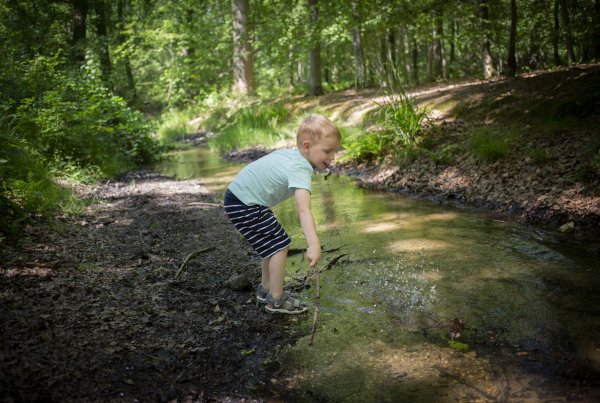
Roode Beek
The Roode Beek runs right through Schutterspark. Because the small pieces of iron rust, the water in the streams turns a little red, hence the name Roode Beek! Stroll along the narrow paths along the stream and enjoy the babbling water.
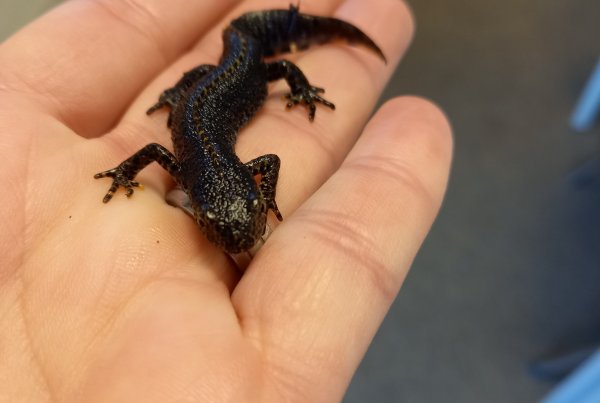
Special animals
Marsh, hanging fens, heath and woods, you can find it all in Schutterspark! This is why many animals feel at home. There are no less than 17 species of bats, which like to live in the various pumping buildings. Or the alpine newt, swamp grasshopper and many special dragonflies and butterflies in the hanging fens. Or spot the tawny owl, kingfisher or wagtail. Deer and wild boar also regularly cross from the Schinveldse bossen to the Brunsummerheide. Which animal will you discover?
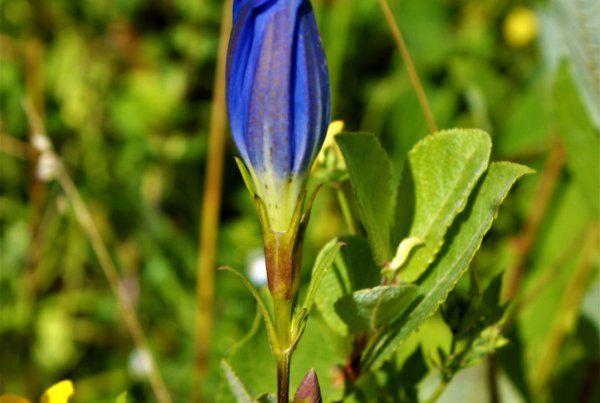
Special plants
Because of the hanging fens, Schutterspark is home to many special plants that do not occur or only occur rarely in the Netherlands. Species of wet heath and peat moorland such as Lavender heather, Peat moss, Bog break, Bellied gentian, Blue knot and Lying wing flower. In addition, you will find various unusual peat mosses. Do you know any of these species?
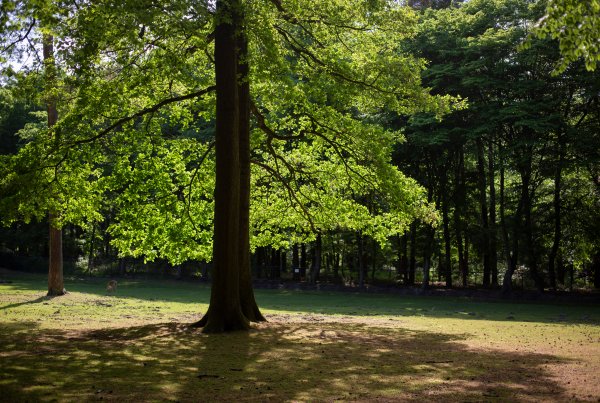
Connection port
Schutterspark connects the beautiful nature reserves of Brunssummerheide on the one hand and Schinveldse bossen/Tevenerheide on the other. Many deer, wild boar and other animals regularly use this connection to cross over. But people can also walk or cycle parallel to the Roode Beek to the Brunssummerheide. Perhaps a forest or heathland inhabitant will cross your path!
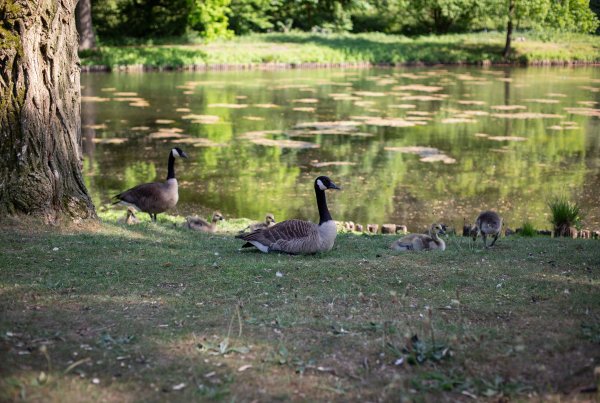
Ponds
Initially, the ponds were built as sedimentation ponds (also called mud ponds) to discharge the waste water from the coal laundry. Later, the ponds were connected to the Roode Beek. This prevented the ponds from overflowing and created a flow. When Schutterspark became a recreation park for miners, vegetation grew along the ponds. Walk along the ponds, stare at the ripples in the water from a bench (see number 26 on the map) or go fishing.

My favourite spot
“When you walk across the wooden bridges through the swamp forest,
you imagine yourself in an American swamp for a moment.
So beautiful…”
Maud de Graaff
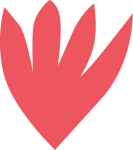
Blogs and
tips
An overview of all the tips and blogs about Schutterspark in Brunssum.

